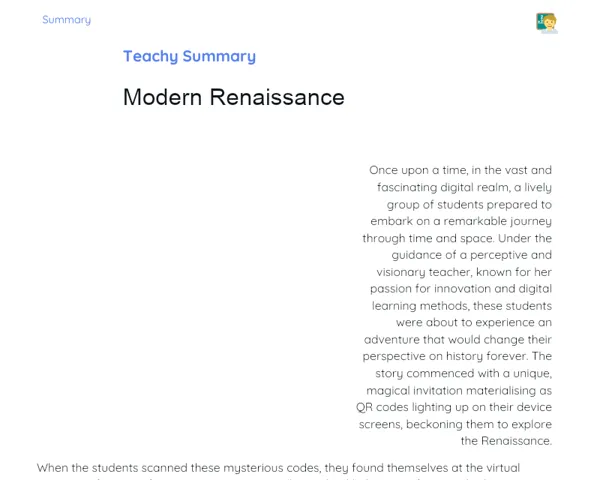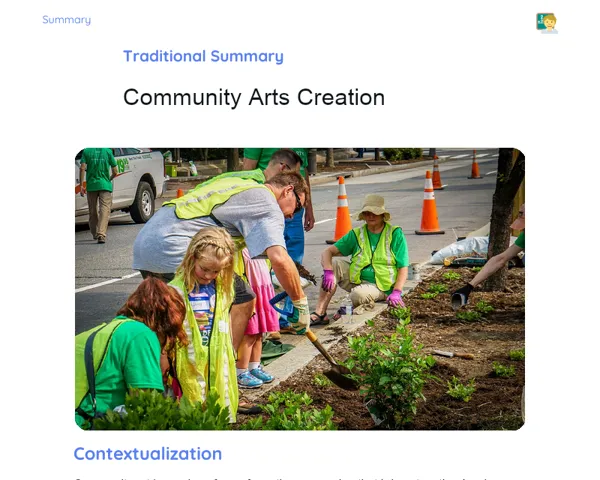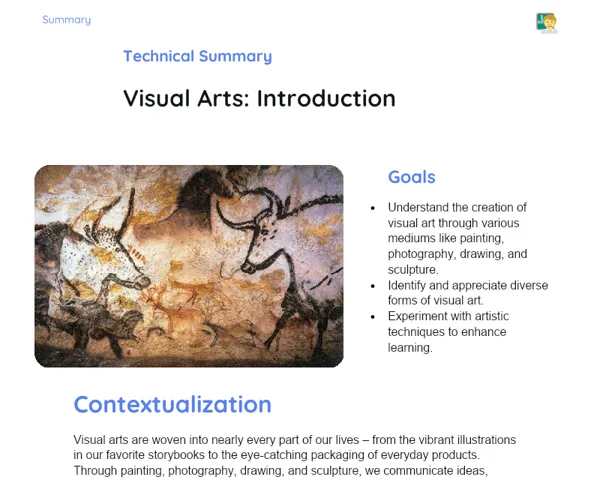Goals
1. Understand the concept of rock art and its historical significance.
2. Identify and analyze rock art records found in the caves of ancient communities.
3. Relate rock art to the development of early human societies.
Contextualization
Rock art represents one of humanity's earliest forms of expression, dating back thousands of years. The drawings and paintings found in cave walls across the globe provide a fascinating glimpse into the lives of our prehistoric ancestors. These images help us understand their methods of hunting, food gathering, and social organization. Studying these artworks feels like time traveling back to observe the daily lives of societies long before writing came into play. Noteworthy sites like the Lascaux caves in France and the Altamira caves in Spain are prominent examples of rock art that offer invaluable insights into the life and culture of early human communities.
Subject Relevance
To Remember!
Origin and Definition of Rock Art
Rock art encompasses the drawings and paintings created by prehistoric humans on cave walls. These visual records, some thousands of years old, represent humanity's earliest artistic expressions and modes of communication. The depictions include human figures, animals, and scenes depicting everyday life such as hunting and rituals.
-
Rock art serves as one of the earliest visual records of humanity.
-
It includes drawings and paintings found in caves globally.
-
The depictions consist of human figures, animals, and common activities.
-
These records date back thousands of years.
Materials and Techniques Used
Prehistoric artists relied on natural materials found in their surroundings to create their works. They used charcoal, ochres (natural pigments), and even animal blood and fat to make paints. Their techniques involved everything from applying with fingers to using simple brushes made from animal hair or leaves, and even spraying pigments through hollow bones.
-
Materials encompassed charcoal, ochres, blood, and animal fat.
-
Application techniques ranged from fingers to simple brushes.
-
Pigments were sometimes sprayed using hollow tubes.
Cultural and Social Significance
Rock art transcends mere artistic expression; it carries profound cultural and social meaning. The paintings served as communication tools, historical documents, and perhaps even participated in religious or magical practices. They provide insight into the beliefs, values, and lifestyles of prehistoric societies.
-
Rock art acted as a means of communication and historical documentation.
-
It may have been linked with religious or mystical practices.
-
It offers insights into the beliefs, values, and daily lives of prehistoric communities.
Practical Applications
-
Archaeology: Examining archaeological sites to better understand ancient cultures.
-
Art History: Investigating artistic techniques and styles across different eras.
-
Cultural Tourism: Visiting and preserving archaeological sites, attracting visitors, and promoting the safeguarding of our historical heritage.
Key Terms
-
Rock Art: The drawings and paintings made by prehistoric humans on cave surfaces.
-
Ochres: Natural pigments used by ancient artists to produce paints.
-
Historical Heritage: The tangible and intangible assets that belong to the history and culture of a community, which need to be preserved for future generations.
Questions for Reflections
-
How can rock art enhance our understanding of the beliefs and values of early communities?
-
Why is it important to preserve rock art sites for future generations?
-
In what ways did the materials and techniques used in rock art shape the evolution of artistic practices over time?
Creation of Modern Rock Art
To consolidate your understanding of rock art, students will be encouraged to create their own versions using modern materials.
Instructions
-
Divide into small groups of 3-4 students.
-
Utilize materials such as charcoal, crayons, kraft paper, brushes, and natural paints (or substitutes).
-
Create a series of drawings that depict aspects of modern daily life (e.g., transportation, food, technology) in styles inspired by rock art.
-
Think creatively about how to symbolically and stylistically represent these scenes, akin to prehistoric artists.
-
After creation, each group should present their artworks to the class, explaining what each drawing signifies and how it connects to rock art techniques.



